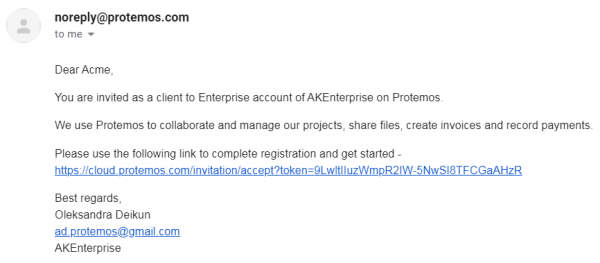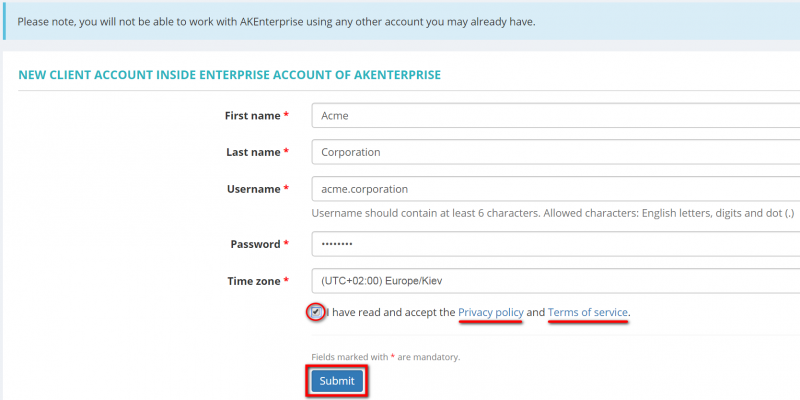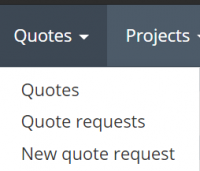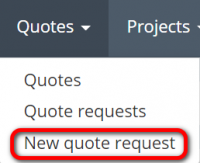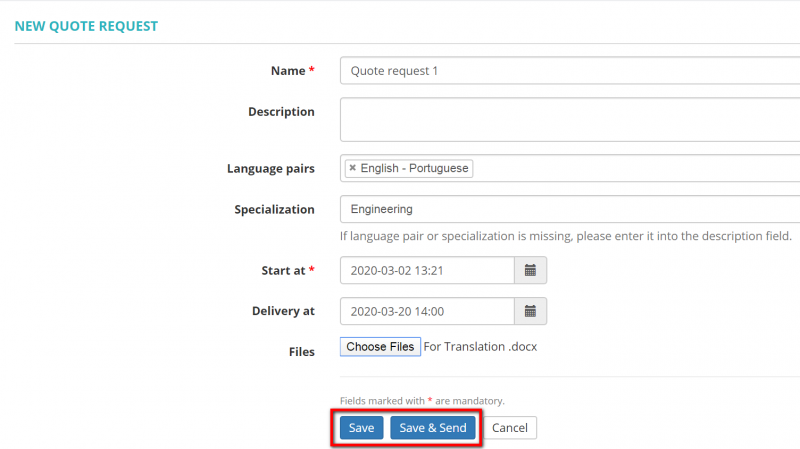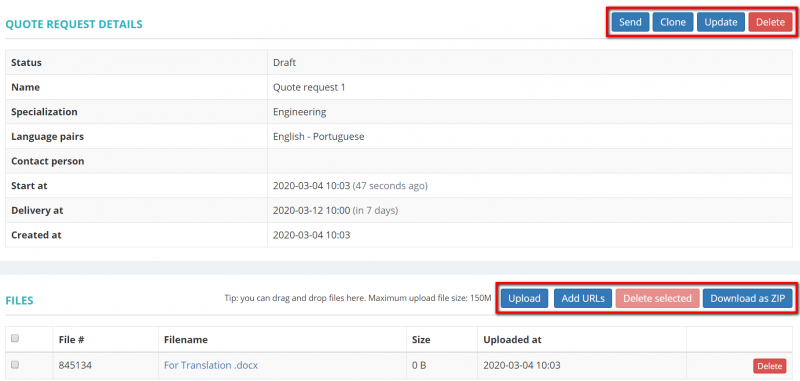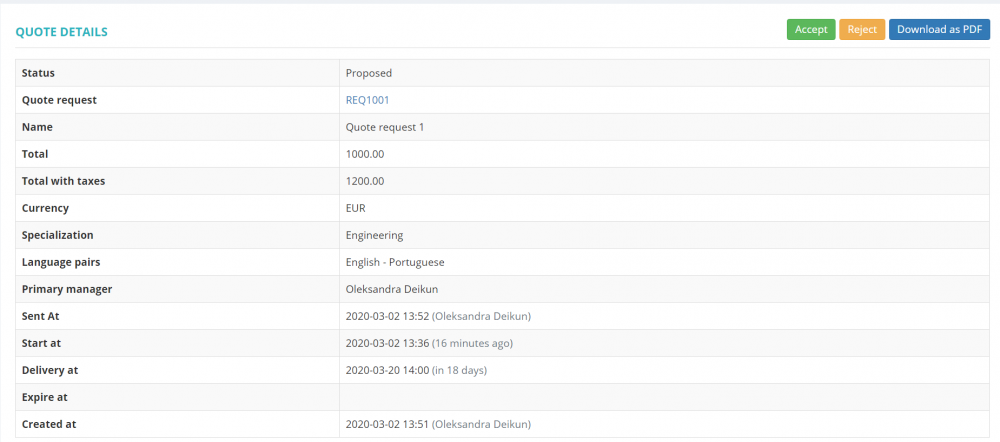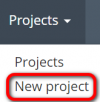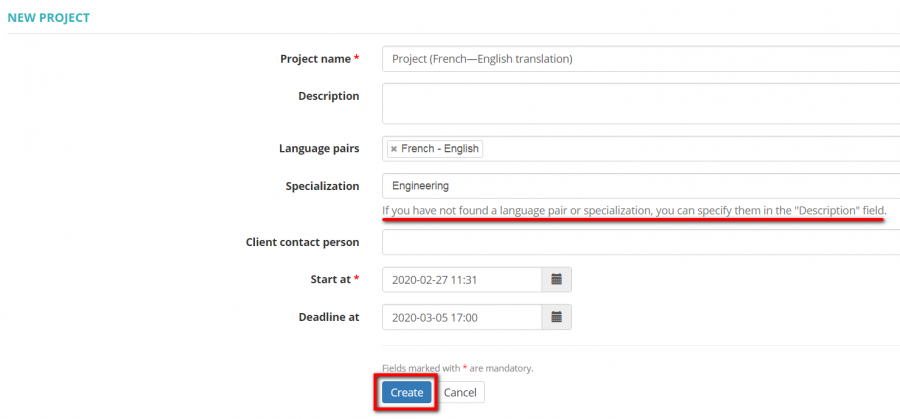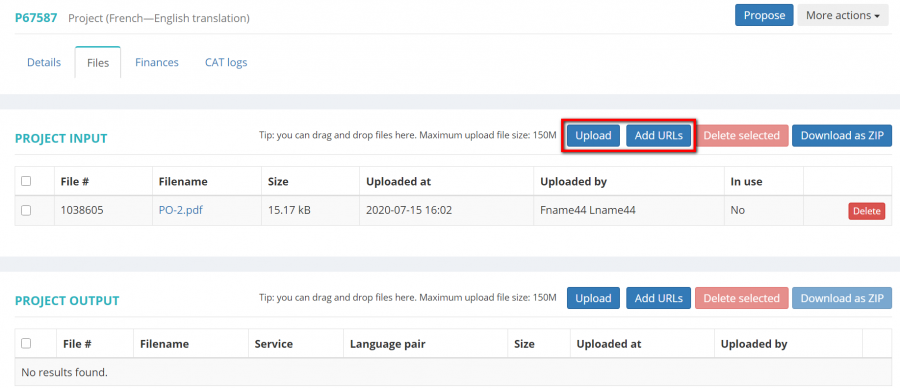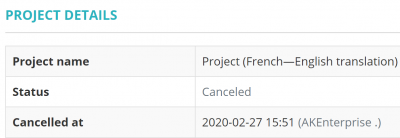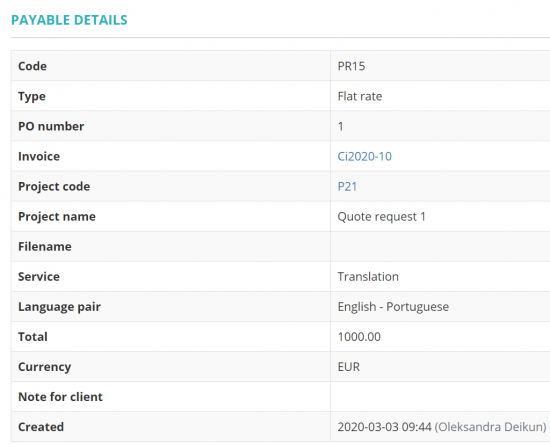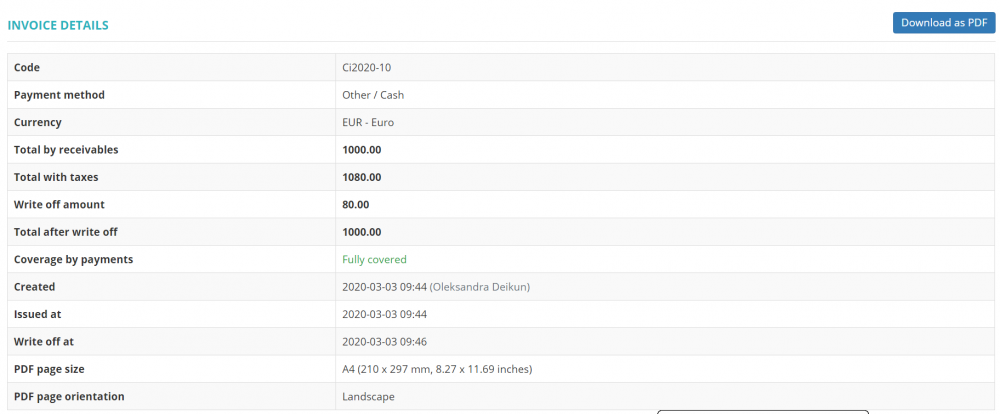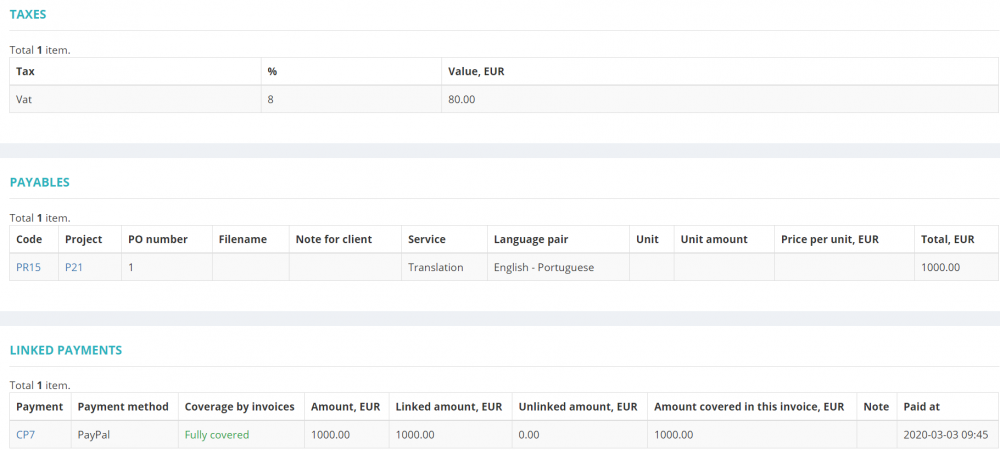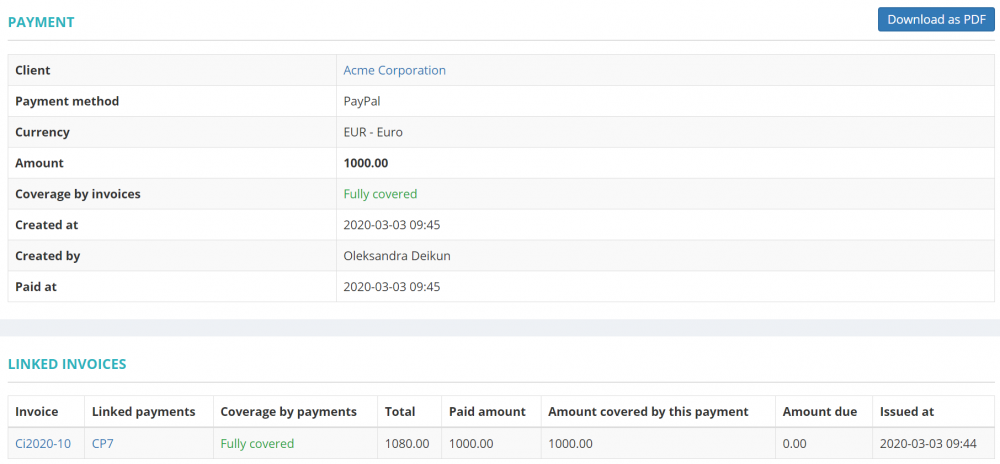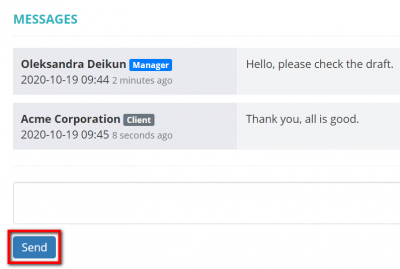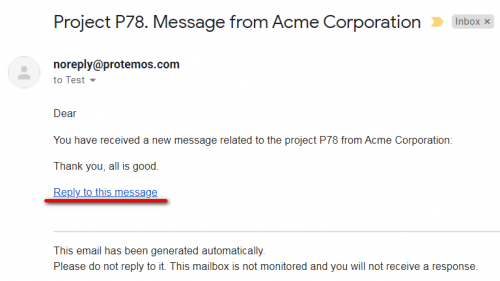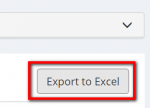Client user manual
Contents
Introduction
Protemos is a project management system for translation agencies and freelancers.
Clients may use Protemos to create quote requests, projects, share files, check invoices and payments.
This Client Manual is intended for the users registered as clients within the translation agency accounts.
How to register the client account
1. The translation agency you cooperate with adds your client profile in the system. You receive the invitation email:
2. Accept the invitation by clicking the link in the received email. The following window will appear:
3. Create your own username and password, then click "Submit".
4. Your account will be created.
My profile settings
On the My Profile page you can update your personal information, change your username and account password.
To do so, go to the My profile menu:
For more detailed information, please check the My profile page.
![]() Back to the table of contents.
Back to the table of contents.
Get started with the client account
There are several main menus that you need to focus on:
- Quotes — the list of Quotes and Quote requests.
- Projects — the list of projects.
- Payables— the amount you pay for each project.
- Invoices — the invoices due to be paid or already paid projects.
- Payments — the payments made by you to the translation agency.
Here you can see summary of your projects and finances:
Here you can see the lists of your quotes, multi-quotes, quote requests and create new quote requests.
Create new quote request
If you would like to know how much a potential project will cost, time frames for its implementation, etc., you can create a quote request and send it to your manager.
The manager can convert it to the quote and send it to you. And if you agree with the quote conditions, you or the manager can create the project after all.
So, there are two ways to create a quote request:
1. Click the Quotes menu on the top panel and then click "New quote request":
Or you can go to the Quote requests list and click the "New quote request" button:
In both cases, it will open the New quote request page where you can specify all the basic details for the request and upload files if necessary:
2. Record the request with the "Save" or "Save & Send" buttons.
If you click "Save & Send", the manager will get the corresponding notification and you will not be able to update the quote request.
If you click "Save", you can send, update, clone, delete the quote request and manage input files by clicking the corresponding buttons:
3. If the manager confirms your quote request, they can convert it to the quote and send it to you.
You get the corresponding notification and can check all the quote details: general information, payment details, taxes, deadline, etc.:
4. You can accept, reject, and download the quote as PDF by clicking the corresponding buttons:
If you accept the quote, the manager will get the corresponding notification. You and your manager can convert the quote into the project by clicking the "Create project" button:
![]() Back to the table of contents.
Back to the table of contents.
Add new project
There are two ways to create the project:
1. Click the Projects menu on the top panel and then click the New project button:
2. Or you can go to the Projects list and click the "New project" button:
Both of these actions will open the New project page.
3. Enter the basic project data into the fields:
- Project name — the name of the project, text field.
- Description — a description of the project, text field. If you have not found a language pair or specialization, you can specify them in the "Description" field.
- Language pairs — the drop-down list of source and target languages for the translation project.
- Specialization — the drop-down list of specialization for the translation project.
- Client contact person — a contact person your side. The manager of the translation company can add or edit the contact person for the client.
- Start at — the start date and time of the project.
- Deadline at — the deadline date and time for the project.
Note: The account administrator can disable project creation by clients.
4. Having entered all the data about the project, click "Create" button and the Project details page will be displayed:
Note: A newly created project has the "Draft" status and is not visible to the manager.
Details section
In the Details section you can see the general information of the project. You can propose, update the required information or delete the project:
Files section
Here you can manage your files. You can upload project files and check the project output files after your manager adds them.
Finances section
Here you can see your finances. The manager should enter the amount of payables. From your side you can "Mark the project as free of charge" if you agreed on the following:
CAT logs section
In the CAT logs section you may upload cat log files if necessary. You can do that in two ways: "Upload" the file or "Input CAT log manually":
![]() Back to the table of contents.
Back to the table of contents.
Project workflow
5. Once you're done with the preparation, click the "Propose" button:
The request for the new project will be sent to the project manager, and the project gets the "Proposed by client" status:
6. In case you need to update the project, you should move it to the "Draft" status:
The manager will get the corresponding notification.
Note: If the project was accepted by the manager, thus, has the "Active, confirmed by manager" status, you will not be able to move it to draft or delete it:
7. If the manager hasn't accepted the project, you will get the corresponding email containing the rejection reason.
In this case, the project gets the " Proposal rejected" status:
You will be notified by email when the manager confirms the start of the project or rejects it.
8. When the manager completes the project, it gets the "Completed" status.
You will get the corresponding notification and you can accept or reject the project:
9. If you accepted or rejected the project, it gets the following statuses:
10. The project manager can also cancel the project when it is in the "Active" or "Completion rejected" statuses. If they do so, you will receive the corresponding notification, the project will get the "Canceled" status:
When the translation agency has created a project, in the Finance tab you can see how much you need to pay.
You can find all your payables by clicking the Payables' menu on the top panel:
Now choose the respective payment from the list by clicking on the payable code:
It will open the payable page where you can see the payment details and linked invoices in the corresponding sections:
![]() Back to the table of contents.
Back to the table of contents.
You can check your invoices by clicking the "Invoices" menu on the top panel:
It will bring you to the Invoices list:
Now choose the respective invoice from the list by clicking on the invoice code.
It will open the invoice page where you can see the invoice details, taxes, payables, linked payments:
![]() Back to the table of contents.
Back to the table of contents.
When the translation agency has entered the payment paid by you in its database, you will be able to check it in your account.
Click the "Payments" menu on the top panel:
It will bring you to the Payments list:
Now choose the respective payment from the list by clicking on the payment code.
It will open the payment page, where you can see the payment details and linked invoices in the corresponding sections:
![]() Back to the table of contents.
Back to the table of contents.
Filters
Each page has filters you can use to display the necessary entries in the tables.
Quote filters
The filter looks as follows:
- Quote code — displays only the quotes with the code containing the entered value.
- Quote name — displays only the quotes with the name containing the specified text.
- Description — displays only the quotes with the description containing the specified text.
- Specialization — displays only the quotes with the specified specialization.
- Start date — displays only the quotes which were started in the specified period of time.
- Delivery date — displays only the quotes with the date of delivery in the specified period of time.
- Close date — displays only the quotes with the closing date in the specified period of time.
- Statuses — filters the quotes by a specific status (Proposed, Accepted, Rejected).
- Is expired — displays quotes which are expired or not in accordance with the filter value applied (Yes, No).
Quote requests filters
The filter looks as follows:
- Quote request code — displays only the quote request with the code containing the entered value.
- Quote request name — displays only the quote request with the name containing the specified text.
- Description — displays only the quote request with the description containing the specified text.
- Specialization — displays only the quote request with the specified specialization.
- Statuses — filters the quote requests by a specific status (Draft, Sent, Quoted, Rejected).
- Start date — displays only the quote requests which were started in the specified period of time.
- Delivery date — displays only the quote requests with the date of delivery in the specified period of time.
- Close date — displays only the quote requests with the closing date in the specified period of time.
- Created Date Range — displays only the quote requests with the created date in the specified period of time.
Project filters
The filter looks as follows:
- Project code — displays only the projects with the code containing the entered value.
- Project name — displays only the projects with the name containing the specified text.
- Description — displays only the projects with the description containing the specified text.
- Specialization — displays only the projects with the specified specialization.
- Start date — displays only the projects which were started in the specified period of time.
- Deadline date — displays only the projects with deadlines in the specified period of time.
- Completion date — displays only the projects which were completed in the specified period of time.
- Statuses — filters the projects by a specific status (Draft, Proposed by client, Active, confirmed by manager, Proposal rejected, Completed, Completion accepted, Completion rejected, Canceled).
- Overdue — displays due or overdue projects in accordance with the filter value applied (Yes, No).
- Free of charge — displays projects marked or unmarked as free of charge in accordance with the filter value applied (Yes, No).
- Has receivables — displays projects with or without receivables in accordance with the filter value applied (Yes, No).
- Created from quote — displays the projects whether created from quotes or not in accordance with the filter value applied (Yes, No).
![]() Back to the table of contents.
Back to the table of contents.
Payables filter
The filter looks as follows:
- Payable code — displays only the amounts with the code containing specific characters.
- PO — displays only the payables with specified PO number.
- Project name — displays only the projects with the name containing the specified text.
- Project deadline date — displays only the projects with deadlines in the specified period of time.
- Project statuses — filters the projects by a specific status (Draft, Proposed by client, Active, confirmed by manager, Proposal rejected, Completed, Completion accepted, Completion rejected, Canceled).
- Is invoiced — displays only the receivables which have been or have not been invoiced in accordance with the filter value applied (Yes, No).
- Has PO number — displays only the receivables which have or haven't got a PO number in accordance with the filter value applied (Yes, No).
- Note — displays the receivables with notes containing the specified symbols' combination.
Invoices filter
The filter looks as follows:
- Code — displays the invoices with a specific code.
- Payment method — displays the invoices with a specific payment method.
- Total — displays the invoices within the specified amount of money range.
- Currency — displays the invoices with a specific currency.
- Creation date — displays the invoices created within a specific period of time.
- Due date — displays the invoices with the due date within the specified date range.
- Note — displays the invoices with notes containing the specified symbols' combination.
- Overdue — displays only the invoices which are overdue or not in accordance with the filter value applied (Yes, No).
- Has linked payments — displays only the invoices with or without linked payments according to the filter value applied (Yes, No).
- Fully covered — displays only the fully covered or partially/not covered invoices in accordance with the filter value applied (Yes, No).
Payments filter
The filter looks as follows:
- Code — displays only the payments with a specific code.
- Note — displays the payments with notes containing the specified symbols' combination.
- Amount — displays the payments with the specified amount.
- Currency — displays the payments with specified currency.
- Creation date — displays only the payments created within a specific period of time.
- Paid at date — displays only the payments made within a specific period of time.
- Has linked invoices — displays only the payments with or without linked invoices according to the filter value applied (Yes, No).
- Is fully covered — displays only the payments which are fully covered or partially/not covered with invoices according to the filter value applied (Yes, No).
![]() Back to the table of contents.
Back to the table of contents.
Messages
You can communicate with your managers directly in Protemos, instead of exchanging emails or instant messages.
This feature is available for the following vendors' objects:
Here you can see the example of how it looks like:
Clients, vendors, and managers will get emails once someone sent a message to them.
You can read the message and reply straight from the email:
By clicking "Reply to this message", you will be redirected to the "Messages" field of the respective object.
Export data to Excel
On every page of the following menus you can export the tables into .xls files:
To do so, go to the required menu and click the "Export to Excel" button:
